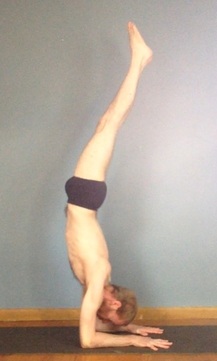 Tiger Pose Tiger Pose Tiger is an inverted posture done balancing on the forearms. It is often called Forearm Balance, but in the Ghosh tradition it is called Tiger Pose. Also in the Krishnamacharya/Iyengar/Ashtanga traditions it is called Pincha Mayurasana or Peacock Feather. All the names refer to the same posture. Practicing Tiger is about two main elements - shoulder strength and tricep strength. This includes the chest and upper back which are necessary in the motion and stability of the shoulders. When we go upside down and balance the entire body on the forearms we need lots of strength, stillness and balance. There are 3 stages in practicing Tiger: building strength against a wall, building strength and balance slightly away from a wall, and balancing without the wall. 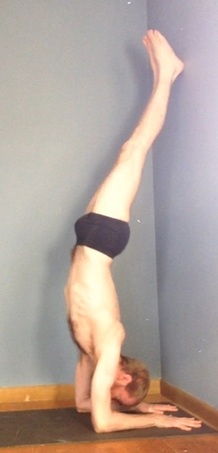 Pic. 2) Stage 1: Against the Wall Pic. 2) Stage 1: Against the Wall Stage 1: Building Strength Against a Wall. Start on your forearms with your fingers an inch from the wall. Kick up (gently) and rest your feet against the wall. The wall helps with balance, so all you have to do is build the strength in your arms and shoulders. (See picture 2) Practice this way until you can hold it easily for a minute. Then move to Stage 2. 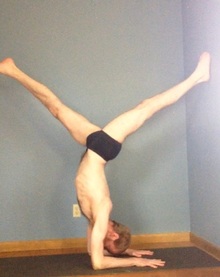 Pic. 3) Stage 2: Slightly Away From the Wall Pic. 3) Stage 2: Slightly Away From the Wall Stage 2: Building Strength and Balance Slightly Away From the Wall. Move away from the wall so your fingers are 3 or 4 feet from the wall. Kick up and let your kicking leg come all the way over and touch the wall. Your trailing leg will stay in front of you. It will look sort of like the splits. (See picture 3) Use this stage to start to find your balance. You will shift both forward and backward. Use your strength and be as balanced and even as possible. Start to lift your foot away from the wall. Find moments of balance in this splits-like formation. Gradually straighten both legs upward until they are together and upright, like in Stage 3. 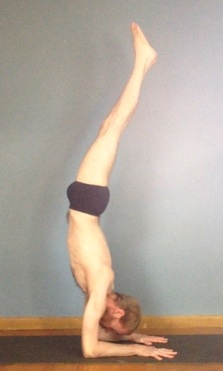 Pic. 4) Stage 3: Without the Wall Pic. 4) Stage 3: Without the Wall Stage 3: Balancing Without the Wall. Finally, move an extra foot or two from the wall. For awhile you should stay near one so if you start to fall backward you can catch yourself like in Stage 2. But in this stage the goal is balancing upright with the legs together. At the beginning you may only be able to hold it for a second. One second will become two and two will become five. Keep practicing. Find stillness, find balance. It took me about a year of practicing these stages before I could balance for more than a few seconds.
0 Comments
Leave a Reply. |
This journal honors my ongoing experience with the practice, study and teaching of yoga.
My FavoritesPopular Posts1) Sridaiva Yoga: Good Intention But Imbalanced
2) Understanding Chair Posture 2) Why I Don't Use Sanskrit or Say Namaste 3) The Meaningless Drudgery of Physical Yoga 5) Beyond Bikram: Why This Is a Great Time For Ghosh Yoga Categories
All
Archives
November 2017
|

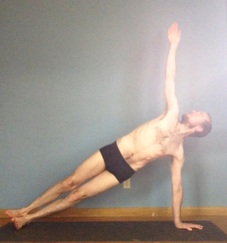
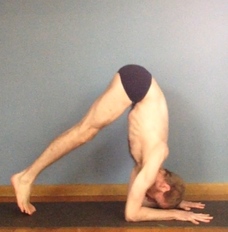
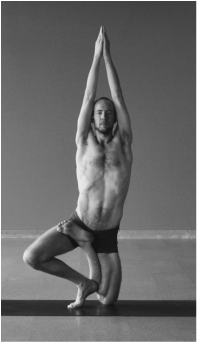
 RSS Feed
RSS Feed